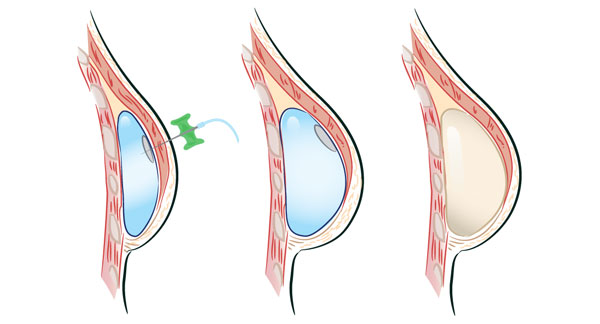Tissue Expanders

Implant-based breast reconstruction often requires multiple stages. At the time of the mastectomy, a temporary spacer called a tissue expander is placed in the breast. While the tissue expander is round and resembles a breast, it has a unique feature that allows it to gradually stretch the breast skin after surgery to accommodate the ultimate implant. A magnetic port can be accessed through the skin to instill sterile saline into the device. Tissue expansion is usually begun in the operating room with a modest initial volume. Over a series of office visits, starting about 1 month after surgery and spaced 1-2 weeks apart, the tissue expander is expanded to the target volume. That volume is determined by the patient’s anatomy and her goals, and the expansion process can take weeks or months.


Most women do not experience significant discomfort during tissue expansion though some will take a mild pain medication like ibuprofen prior to a “fill.” Once the skin is sufficiently stretched, a second operation is performed to exchange the tissue expander for a permanent implant.
Tissue expanders are sometimes placed at the time of the mastectomy even if a DIEP or other autologous reconstruction is planned. At the second operation, the expanders are removed and the breast rebuilt using a woman’s own tissue.